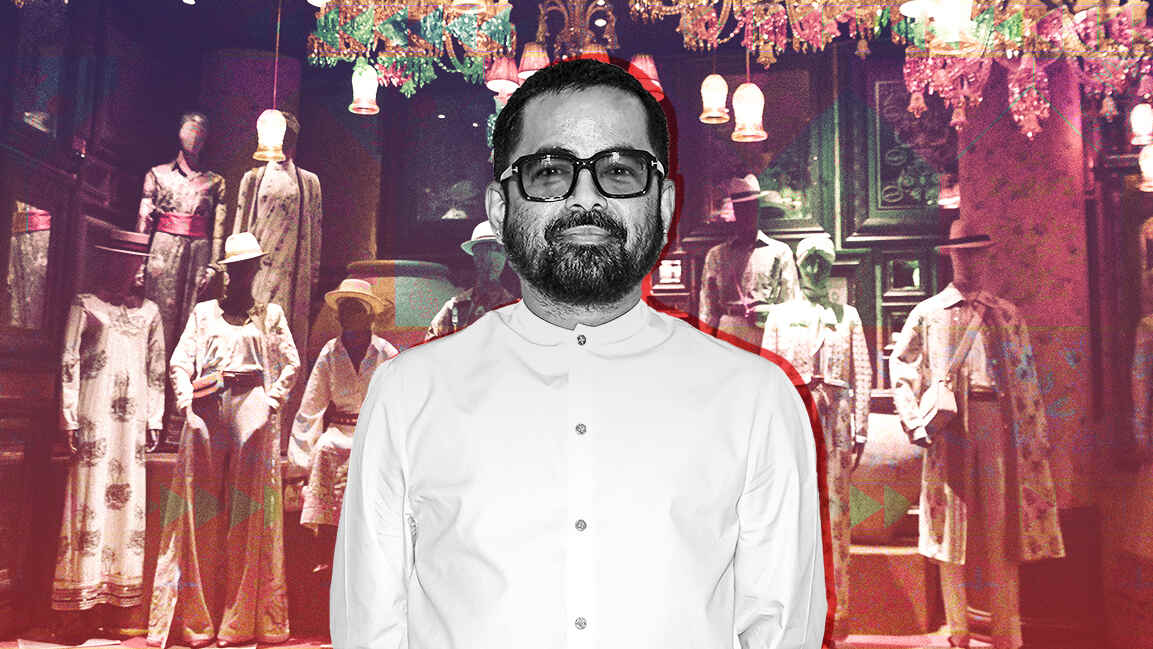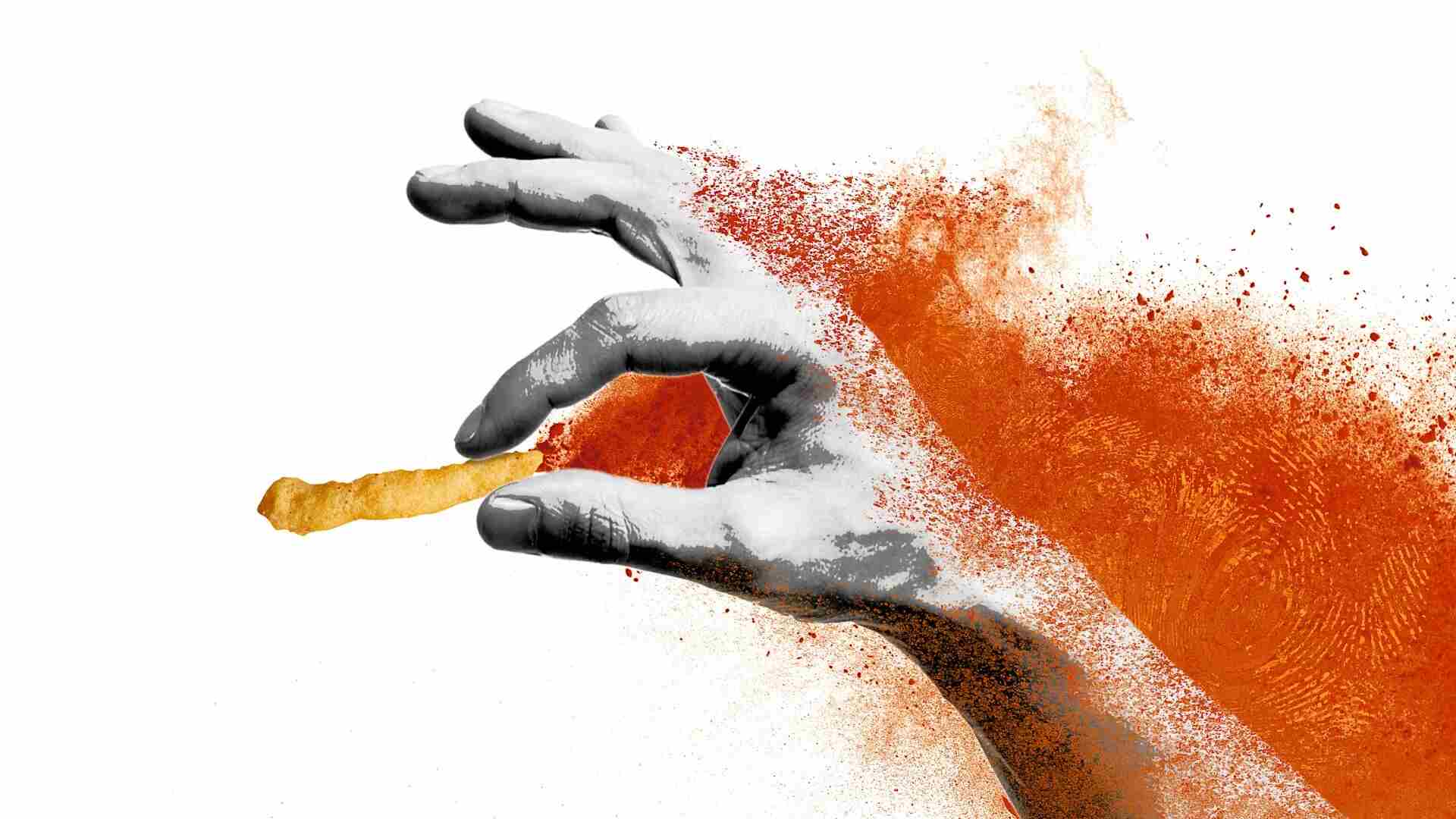- | 10:00 am
I want to make my business very big in the Middle East, says designer Sabyasachi
In a world chasing trends, Sabyasachi is focused on something else: making space for craft, memory, and meaning.

Imagine entering a room with ornate textiles, paintings, and vases thoughtfully sprawled across the space. The ceiling is adorned with chandeliers, and each wall—reflective of heritage—is rife with stories. You are not stepping into a museum but into a store representing the luxury fashion of Indian designer Sabyasachi Mukherjee.
With his eponymous label, the designer says his journey was never easy—from days spent in Kolkata to identifying a gap in the industry and eventually taking his brand global by selling stakes in his business to a retail group and opening his latest store in New York.
Now, he’s often thinking about what’s next in terms of brand legacy. To own a brand so closely knit to the ethos of India’s fabric is a hefty responsibility. Mukherjee’s vision and understanding of what the brand means for the nation have guided him in ensuring its legacy and impact continue to grow in the years ahead. The largeness of his vision has shaped his brand decisions most of the time, starting with the immersive in-store experiences.
“In cities like Mumbai, heritage buildings are being torn down to make way for skyscrapers. Culture is one of the greatest soft powers any country can have. India has so much to offer, and I try to reflect all of that in my store—for the new generation to see and experience,” Mukherjee said in a fireside chat, part of the Business of Fashion’s flagship event, Crossroads, in Dubai.
“To sell craft, you must first sensitize people to its importance. That’s why we create immersive experiences—to inspire people to understand India we’re at risk of destroying and to remember the India that once was,” he added.
ON BRAND LEGACY
Sabyasachi has remained a coveted label for celebrities worldwide for over two decades. Synonymous with heritage, craftsmanship, and luxury, the brand has collaborated with Estée Lauder, H&M, Disney, and others to make itself more accessible while maintaining its cultural core.
As he looks toward expanding his business, Mukherjee sees strong potential in the Middle East. “I want to make my business very big in the Middle East. We already have many royal families from the region who are our customers,” he said.
In 2021, he sold a 51% stake in his company to the Aditya Birla Group. But as he explained, it wasn’t driven by monetary motives. “I have no one to give the business to, and I often feel I don’t own the business anymore—because it belongs to the country.”
In terms of revenue, he acknowledged that his label might be a very small business, but in terms of its “reverence and its influence”, it’s a “very large business in India,” adding that “almost the entire country is extremely proud of what we’ve built”.
The vision is to preserve that legacy and heritage. “I am finite, but my brand must be infinite.”
ON BRANDS ENTERING THE INDIAN MARKET
Having collaborated with several brands in cosmetics, footwear, and fashion, Mukherjee believes that entering the Indian market requires more than ambition—it demands deep understanding. “While you’re excited about the market size, be aware that you’re entering a very difficult market,” he says.
He described the Indian consumer as among the most discerning in the world—driven by value, not just price. “There’s a misnomer that Indians buy cheap. That’s not true at all. I think Indians buy value,” he said.
According to Mukherjee, many international luxury brands struggle in India because they rely solely on advertising rather than forging genuine cultural connections. “If you’re not going to talk about your intangible story well enough, they won’t buy you,” he said.
“Luxury is not foreign to India,” he emphasized, referencing how Indian royalty once commissioned iconic brands like Cartier and Louis Vuitton. International brands must recognize that luxury is not new to this country.”
“If you can sell them value, they will open their wallets to you,” he said.
He urged brands to avoid superficial marketing and instead focus on deeper storytelling. “Bring value, and make sure you tell the story well—because I think it’s a very emotional country at the end of the day.” In his view, storytelling and authenticity are key to success in India. “There’s nothing the West can do that India can’t do alone.”
SHOULD CRAFTS BE UNDER TRUMP TARIFFS
Amid the impending US full-scale trade war, which is now paused temporarily, Mukherjee said, “Products that create soft power—especially those made with craft—should be free of trade restrictions.”
He continued, “I believe there should be free trade between countries. Globally, people are excited about a diverse world—we don’t live in a monoculture. Sometimes, we need to think about what we’re leaving behind for the next generation.”
“If we don’t allow craft and culture to thrive in different parts of the world, there will be no meaning in travel, no sense of discovery.” While acknowledging that some products may warrant tariffs, he emphasized that “businesses rooted in craft and culture should be exempt. We need to let them thrive—to help make the world a richer, more diverse, and meaningful place to live in.”
THE FUTURE OF LUXURY & WORLD OF WISDOM
Reflecting on the evolution of luxury, Mukherjee shared his thoughts on what tomorrow’s consumers will value most.
“As we move into the world of wisdom,” he said, “I often ask myself: what is the future luxury customer going to buy?”
His answer is simple: “The customer is going to buy craft. The customer’s going to buy authenticity. And they’ll also support brands helping craft ecosystems stay alive.”
Mukherjee believes today’s consumers want more than just a product—they want a connection. “Businesses need to become more and more human,” he said. “Too many luxury brands have grown disproportionately by just trading. Many of them outsource their entire production.”
In contrast, he believes the future belongs to brands deeply rooted in their own culture and craft. “The brands that will lead the next generation are the ones with their own production backyards and a strong sense of heritage.”





































